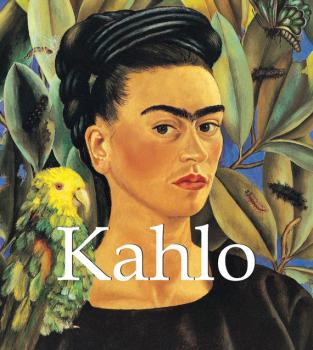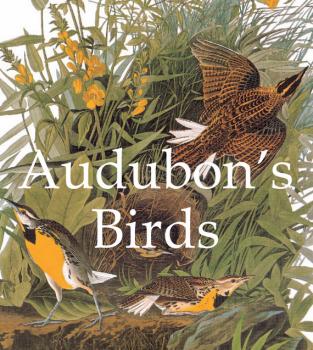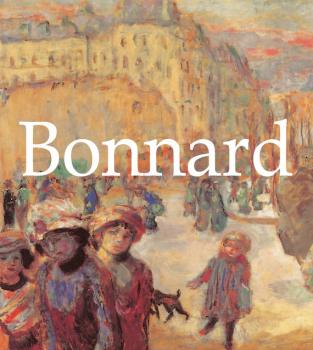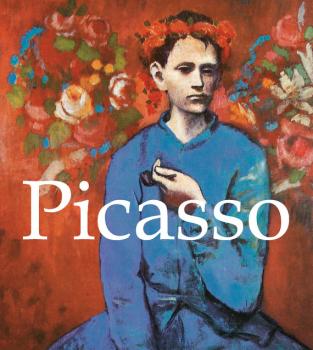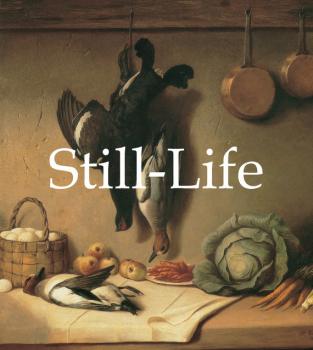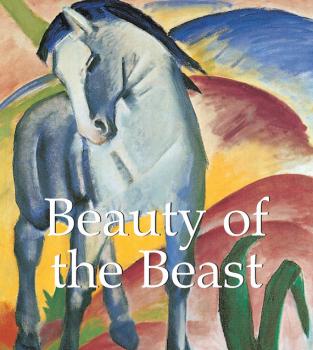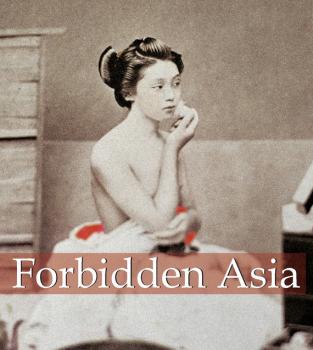ТОП просматриваемых книг сайта:















Иностранные языки
Различные книги в жанре Иностранные языки, доступные для чтения и скачиванияАннотация
Behind Frida Kahlo’s portraits, lies the story of both her life and work. It is precisely this combination that draws the reader in. Frida’s work is a record of her life, and rarely can we learn so much about an artist from what she records inside the picture frame. Frida Kahlo truly is Mexico’s gift to the history of art. She was just eighteen years old when a terrible bus accident changed her life forever, leaving her handicapped and burdened with constant physical pain. But her explosive character, raw determination and hard work helped to shape her artistic talent. And although he was an obsessive womanizer, the great painter Diego Rivera was by her side. She won him over with her charm, talent and intelligence, and Kahlo learnt to lean on the success of her companion in order to explore the world, thus creating her own legacy whilst finding herself surrounded by a close-knit group of friends. Her personal life was turbulent, as she frequently left her relationship with Diego to one side whilst she cultivated her own bisexual relationships. Despite this, Frida and Diego managed to save their frayed relationship. The story and the paintings that Frida left us display a courageous account of a woman constantly on a search of self discovery.
Аннотация
Mary was born in Pittsburgh. Her father was a banker of liberal educational ideas and the entire family appears to have been sympathetic to French culture. Mary was no more than five or six years old when she first saw Paris, and she was still in her teens when she decided to become a painter. She went to Italy, on to Antwerp, then to Rome, andfinally returned to Paris where in 1874, she permanently settled.
In 1872, Cassatt sent her first work to the Salon, others followed in the succeeding years until 1875, when a portrait of her sister was rejected. She divined that the jury had not been satisfied with the background, so she re-painted it several times until, in the next Salon, the same portrait was accepted. At this moment Degas asked her to exhibit with him and his friends, the Impressionist Group, then rising into view, and she accepted with joy. She admired Manet, Courbet and Degas, and hated conventional art.
Cassatt’s biographer stressed the intellectuality and sentiment apparent in her work, as well as the emotion and distinction with which she has painted her favourite models: babies and their mothers. He then speaks of her predominant interest in draughtsmanship and her gift for linear pattern, a gift greatly strengthened by her study of Japanese art and her emulation of its style in the colour prints she made. While her style may partake of the style of others, her draughtsmanship, her composition, her light, and her colour are, indeed, her own. There are qualities of tenderness in her work which could have been put there, perhaps, only by a woman. The qualities which make her work of lasting value are those put there by an outstanding painter.
Аннотация
Audubon’s ambitious project to paint all the birds of North America resulted in a work that represents one of the greatest advances in ornithology. Not only did he identify new species, he also depicted birds within their natural habitat and in vivid poses. This impressive collection ranges from the Greater Flamingo and Bald Eagle to the Carolina parakeet. Audubon describes every species in concise texts, drawing attention the peculiarities of each bird.
Аннотация
Pierre Bonnard was the leader of a group of Post-Impressionist painters who called themselves the Nabis, from the Hebrew word meaning “prophet”. Bonnard, Vuillard, Roussel and Denis, the most distinguished of the Nabis, revolutionised decorative painting during one of the richest periods in the history of French painting. Bonnard’s works are striking for their strong colours and candidness.
Аннотация
At fifteen, Turner was already exhibiting View of Lambeth. He soon acquired the reputation of an immensely clever watercolourist. A disciple of Girtin and Cozens, he showed in his choice and presentation of theme a picturesque imagination which seemed to mark him out for a brilliant career as an illustrator. He travelled, first in his native land and then on several occasions in France, the Rhine Valley, Switzerland and Italy. He soon began to look beyond illustration. However, even in works in which we are tempted to see only picturesque imagination, there appears his dominant and guiding ideal of lyric landscape. His choice of a single master from the past is an eloquent witness for he studied profoundly such canvases of Claude as he could find in England, copying and imitating them with a marvellous degree of perfection. His cult for the great painter never failed. He desired his Sun Rising through Vapour and Dido Building Carthage to be placed in the National Gallery side by side with two of Claude’s masterpieces. And, there, we may still see them and judge how legitimate was this proud and splendid homage. It was only in 1819 that Turner went to Italy, to go again in 1829 and 1840. Certainly Turner experienced emotions and found subjects for reverie which he later translated in terms of his own genius into symphonies of light and colour. Ardour is tempered with melancholy, as shadow strives with light. Melancholy, even as it appears in the enigmatic and profound creation of Albrecht Dürer, finds no home in Turner’s protean fairyland – what place could it have in a cosmic dream? Humanity does not appear there, except perhaps as stage characters at whom we hardly glance. Turner’s pictures fascinate us and yet we think of nothing precise, nothing human, only unforgettable colours and phantoms that lay hold on our imaginations. Humanity really only inspires him when linked with the idea of death – a strange death, more a lyrical dissolution – like the finale of an opera.
Аннотация
Picasso was born a Spaniard and, so they say, began to draw before he could speak. As an infant he was instinctively attracted to artist’s tools. In early childhood he could spend hours in happy concentration drawing spirals with a sense and meaning known only to himself. At other times, shunning children’s games, he traced his first pictures in the sand. This early self-expression held out promise of a rare gift. Málaga must be mentioned, for it was there, on 25 October 1881, that Pablo Ruiz Picasso was born and it was there that he spent the first ten years of his life. Picasso’s father was a painter and professor at the School of Fine Arts and Crafts. Picasso learnt from him the basics of formal academic art training. Then he studied at the Academy of Arts in Madrid but never finished his degree. Picasso, who was not yet eighteen, had reached the point of his greatest rebelliousness; he repudiated academia’s anemic aesthetics along with realism’s pedestrian prose and, quite naturally, joined those who called themselves modernists, the non-conformist artists and writers, those whom Sabartés called “the élite of Catalan thought” and who were grouped around the artists’ café Els Quatre Gats. During 1899 and 1900 the only subjects Picasso deemed worthy of painting were those which reflected the “final truth”; the transience of human life and the inevitability of death. His early works, ranged under the name of “Blue Period” (1901-1904), consist in blue-tinted paintings influenced by a trip through Spain and the death of his friend, Casagemas. Even though Picasso himself repeatedly insisted on the inner, subjective nature of the Blue Period, its genesis and, especially, the monochromatic blue were for many years explained as merely the results of various aesthetic influences. Between 1905 and 1907, Picasso entered a new phase, called “Rose Period” characterised by a more cheerful style with orange and pink colours. In Gosol, in the summer of 1906 the nude female form assumed an extraordinary importance for Picasso; he equated a depersonalised, aboriginal, simple nakedness with the concept of “woman”. The importance that female nudes were to assume as subjects for Picasso in the next few months (in the winter and spring of 1907) came when he developed the composition of the large painting, Les Demoiselles d’Avignon. Just as African art is usually considered the factor leading to the development of Picasso’s classic aesthetics in 1907, the lessons of Cézanne are perceived as the cornerstone of this new progression. This relates, first of all, to a spatial conception of the canvas as a composed entity, subjected to a certain constructive system. Georges Braque, with whom Picasso became friends in the autumn of 1908 and together with whom he led Cubism during the six years of its apogee, was amazed by the similarity of Picasso’s pictorial experiments to his own. He explained that: “Cubism’s main direction was the materialisation of space.” After his Cubist period, in the 1920s, Picasso returned to a more figurative style and got closer to the surrealist movement. He represented distorted and monstrous bodies but in a very personal style. After the bombing of Guernica during 1937, Picasso made one of his most famous works which starkly symbolises the horrors of that war and, indeed, all wars. In the 1960s, his art changed again and Picasso began looking at the art of great masters and based his paintings on ones by Velázquez, Poussin, Goya, Manet, Courbet and Delacroix. Picasso’s final works were a mixture of style, becoming more colourful, expressive and optimistic. Picasso died in 1973, in his villa in Mougins. The Russian Symbolist Georgy Chulkov wrote: “Picasso’s death is tragic. Yet how blind and naïve are those who believe in imitating Picasso and learning from him. Learning what? For these forms have no corresponding emotions outside of Hell. But to be in Hell means to anticipate death. The Cubists are hardly privy to such unlimited knowledge”.
Аннотация
Just as there is a fundamental difference in the use of the words “naked” and “nude”, the unclothed body can evoke a feeling of delight or shame, serving as a symbol of contradictory concepts – beauty and indecency. This book is devoted to representations of the nude by great artists from antiquity and the Italian Renaissance to French Impressionism and contemporary art; from Botticelli and Michelangelo to Cézanne, Renoir, Picasso and Botero. This beautifully produced book provides a collection that will appeal to all art lovers.
Аннотация
Cézanne transformed a teacup into something alive, raising still-life to the point that it ceased to be inanimate. Wassily Kandinsky said about the French artist: “He painted these things as human beings because he was endowed with the gift of divining the inner life in everything.” In addition to those of Cézanne, this book is devoted to still-life paintings by artists such as Van Gogh, Matisse, Chardin and Picasso.
Аннотация
Throughout time, artists have maintained a close relationship with the animal world, which has proved to be an inexhaustible source of inspiration. First, they received inspiration directly from their environment. Next, animals were used in art for their status as domestic friends, symbols of an intimate and familial life, held in particularly high esteem during the Renaissance. Later, in Orientalism, animal art followed the discovery of exotic fauna which appealed to contemporary artists. The animal and its wild beauty are depicted here through works of art from Albrecht Dürer, Pieter Bruegel, Leonardo da Vinci, Katsushika Hokusai, Henri Rousseau, and Paul Klee.
Аннотация
Since The Turkish Baths (1863) by the French painter Ingres, the Far Eastern woman has, to many, been a symbol of out of reach or forbidden pleasures. Seafaring explorers, military adventurers and simple travellers from Europe over the centuries have all been enthralled by the exotic nature of the Asian woman, her foreignness accentuated by the gentle pallor of her skin. Thus arose the myth that she, of all women, was in possession of the knowledge of certain refined pleasures.

